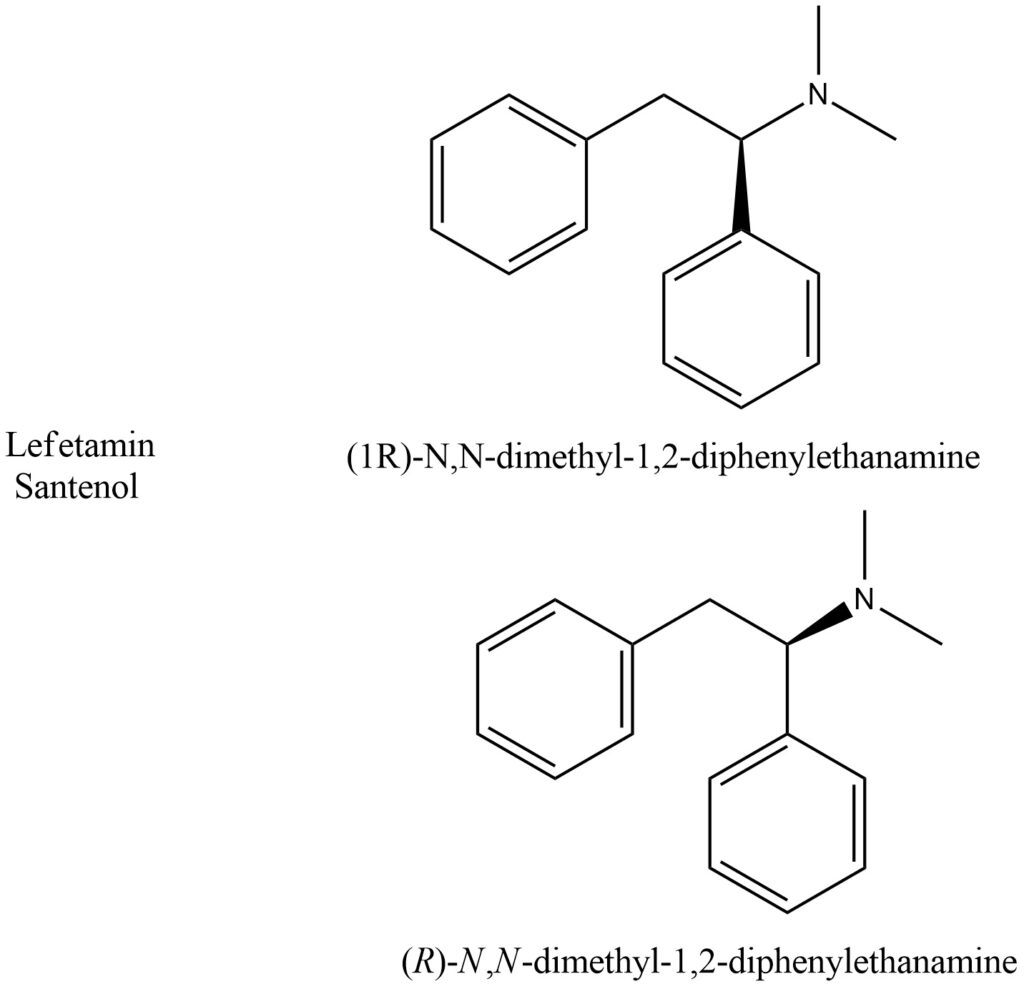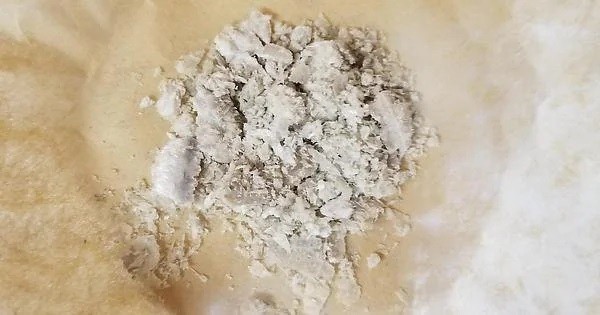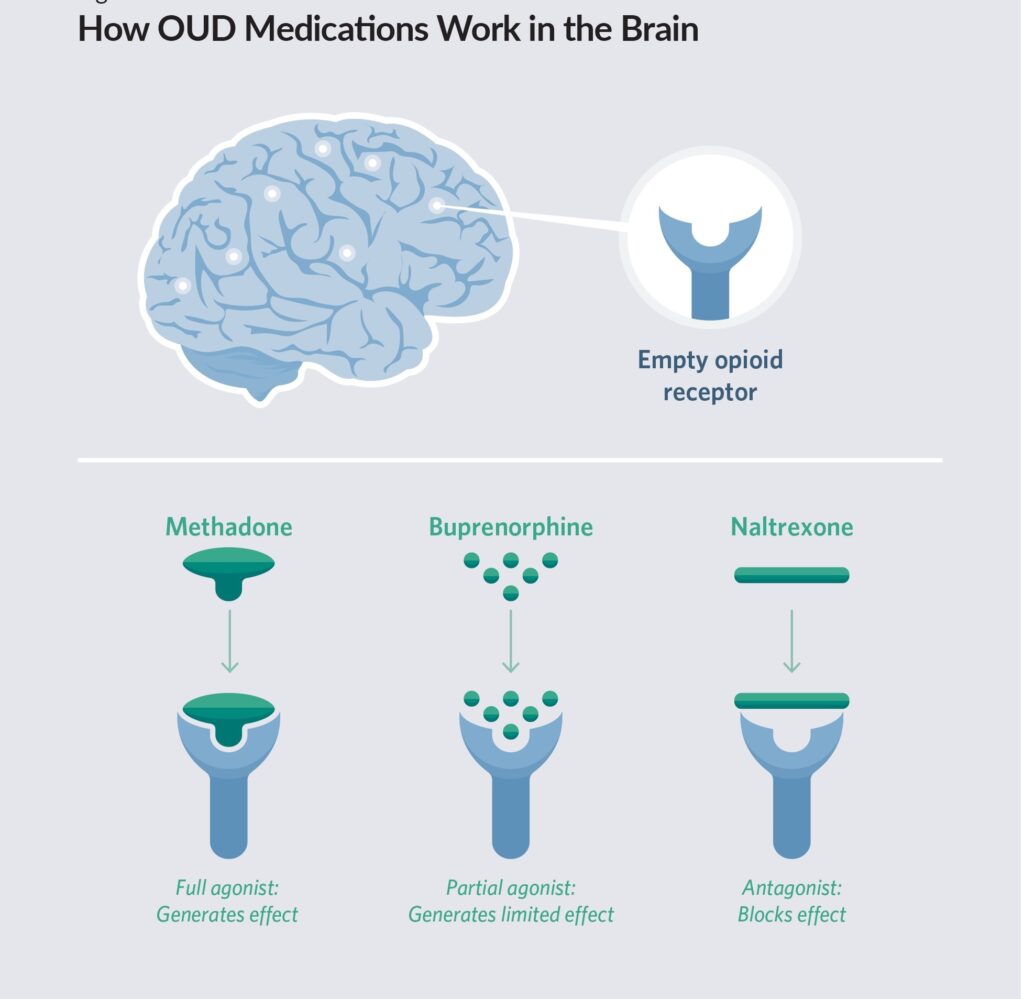- The process of creating a drug - May 23, 2023
- How do scientists model mental disorders in animals? - May 23, 2023
Abstract
Lefetamine, also known as Santenol, is a substance that possesses both stimulant and analgesic properties similar to those of codeine. Studies suggest that Lefetamine may function as a partial agonist for opioid receptors. The drug exhibits effects commonly seen with opiate activity, as well as other effects associated with central nervous system stimulants. In this article, provide a comprehensive overview of Lefetamine, covering its general information, physico-chemical properties, pharmacology, dosage, street names, pricing, effects, symptoms, toxicity, recreational use, legal status, synthesis of N,N-dimethyl-1,2-diphenylethanamine, conclusion, and bibliography.
General Information About Lefetamine [1-3]
Other synonyms names of Lefetamine are: (-)-N,N-Dimethyl-1,2-diphenylethylamine; dl-N,N-Dimethyl-1,2-diphenyl-ethylamine; N,N-dimethyl-1,2-diphenylethanamine; 1-Dimethylamino-1,2-diphenylethane
IUPAC Name of Lefetamine: (1R)-N,N-dimethyl-1,2-diphenylethanamine
CAS numbers are 7262-75-1; 14148-99-3 (hydrochloride)
Trade names are Lefetamina; Lefetaminum; Santenol
Physico-Chemical Properties of Lefetamine [1-4]
- Molecular Formula C16H19N
- MW 225.33 g/mol
- Boiling point 142-147° C
- Melting Point 70.04 °C
- Flash Point: 121.0±18.4 °C
- Solubility: Water Solubility 162.1 mg/L at 25 °C; DMF: 20 mg/ml; DMSO: 20 mg/ml; Ethanol: 15 mg/ml; Methanol: 1 mg/ml; PBS (pH 7.2): 2 mg/ml
- Color/Form: A crystalline solid
Structural formula present on Figure 1.

Figure 1. Structure of Lefetamine (Santenol)
Powder possible of the Santenol can be seen in the picture provided in Figure 2.

Figure 2. Powder of Lefetamine
General Information, Pharmacology, Dosage, Street Name, Price, Effects, Symptoms, Toxicity, Recreational Use of Santenol [4-7]

Figure 3. Model of Full agonist, Partial agonist and Antagonist opioid receptors.
General Information
Lefetamine possesses a chemical structure that enables it to bind to opioid receptors while also inhibiting the reuptake of dopamine and norepinephrine. This is due to the presence of a tertiary amine functional group, which is essential for opioid receptor recognition, as well as a phenethylamine skeleton that contributes to its amphetamine-like effects. The drug has also been reported to exhibit NMDA antagonist effects and to have neurotoxic properties.
Pharmacology
Lefetamine is a drug that combines amphetamine-like effects with those of opioids, and was widely abused in Japan in the 1950s. Ten individuals who abused lefetamine were hospitalized, subjected to naloxone and pentazocine tests, and underwent detoxification. Additionally, lefetamine was administered to ten individuals with acute withdrawal syndrome caused by opiates, and to ten methadone-treated individuals. Results showed that naloxone tests were positive and pentazocine could be used as a substitute for lefetamine. Lefetamine was effective in relieving opiate withdrawal symptoms and did not cause withdrawal symptoms in stabilized opiate addicts, suggesting it may act as a partial agonist for opioid receptors. While naloxone tests performed on lefetamine abusers were positive, the effects were mild and only observed at high doses. Lefetamine administration to methadone-treated individuals showed no antagonism to mu-type opioid effects. Therefore, lefetamine may be considered a putative opiate with mixed actions rather than an agonist/antagonist, as it may interact with different types of opiate receptors and produce a range of clinical effects. Specifically, mu-receptors mediate the suppression of opiate withdrawal syndrome, supraspinal analgesia, and euphoria, while sigma-receptors are associated with dysphoria, hallucinations, and cardiovascular stimulation.
Mechanism of Action of a Partial Opioid Agonist
Dosage, Street Name, Price
Lefetamine, also known as L-SPA, is a synthetic compound with both analgesic and anti-inflammatory properties. It was first introduced in clinical practice in Italy and Japan under the brand name “Santenol.” Santenol is available in the form of 50 mg tablets for oral administration and 60 mg vials for intramuscular use, which also contain lidocaine. Although lefetamine was first reported to be abused by narcotic addicts in Japan in 1961, relevant tests have shown that the drug does not produce physical dependence. However, ten patients who had been abusing lefetamine and had a diagnosis of “addiction to other specific substances” were hospitalized and underwent detoxification at the Drug and Alcohol Dependence Unit of the ‘Gemelli’ University General Hospital. In mice, lefetamine produces motor hyperactivity at a dose of 50 mg/kg and analgesia at a dose of 60 mg/kg. The price of (±)-Lefetamine (hydrochloride) for laboratory use ranges from $71 to $363 per 1-10 mg, and the product is intended for forensic and research applications. The LD50 of Lefetamine is 140 mg/kg.
Effects and symptoms of Santenol Use
Main effects displayed by lefetamine:
- Myosis;
- Muscular shaking;
- Constipation;
- Hyperacusia;
- Dry mouth and throat;
- Auditory disperceptions;
- Tiredness, fatigue;
- Tactile disperceptions;
- Tactile anesthesia;
- Excitement and psychomotor agitation;
- Decreased reactivity to pain;
- Quick flow of speech;
- Apathy;
- Difficulty in falling asleep;
- Tranquillization;
- Manic mood;
- Decreased self control.
To determine whether lefetamine had any antagonistic activity on central opioid receptors, a study was conducted on 10 patients who had applied for opiate detoxification. These patients were all heroin, methadone, or mixed heroin-methadone addicts and were put on a steady methadone treatment (25-35 mg/day) prior to the study. Diagnoses other than opiate dependence were excluded. The patients were injected with lefetamine (60 mg i.v.) after at least 10 days of methadone application, and their withdrawal symptoms were recorded by the CANAS-scale. Statistical analysis was performed using Student’s t-test and Wilcoxon’s test.
Lefetamine exhibits some effects similar to opiates and other effects that are characteristic of CNS stimulants. According to a WHO report, the compound has mixed pharmacological action, resembling both amphetamine and morphine in some respects. Lefetamine has been suggested to possess some properties of the opiate partial agonistic type like pentazocine, a prevalent kappa- and sigma-agonist and mu-antagonist. Lefetamine has induced nausea, dizziness, an increased cardiovascular response, and psychotomimetic effects. However, unlike pentazocine, lefetamine lessened the severity of the opiate withdrawal syndrome and did not precipitate withdrawal symptoms in patients who had been receiving opiates regularly.
Legal Status
Due to its high potential for abuse and addiction, lefetamine was classified as a controlled substance by regulatory authorities in many countries. In Australia, it is listed as a Schedule 4 prescription-only drug. In Canada, it is classified as Schedule III. In Germany, lefetamine is only authorized for scientific use and is listed as Anlage I. In the United Kingdom, it is classified as a Class B drug under the Misuse of Drugs Act. In the United States, lefetamine is listed as a Schedule IV controlled substance under the Controlled Substances Act due to its potential for abuse and risk of dependence.
Synthesis of N,N-dimethyl-1,2-diphenylethanamine [6, 8, 9]
Due to its restricted availability, lefetamine had to be synthesized using a modified version of the Eschweiler-Clarke method, which involves bis-methylation of the primary amine (DPEA). The modification used N-ethyl-di-iso-propylamine (Huenig’s base) to achieve the synthesis of the tertiary amine. The primary amine 1,2-diphenylethylamine, Huenig’s base, paraformaldehyde, and oxalic acid dihydrate were heated under reflux at 125°C for 2 hours in a molar ratio of 1:2:2:2, followed by the addition of water and heating for an additional 30 minutes. After cooling, ethyl acetate was used to remove neutral and acidic organic compounds, and the aqueous solution was basified using ammonium hydroxide solution to pH 10, then extracted using diethyl ether. The organic phase was dried over sodium sulfate and finally evaporated. Isolation and purification were carried out using column chromatography with silica. The synthesis was conducted according to the scheme shown in Figure 4.

Figure 4. General scheme of N,N-dimethyl-1,2-diphenylethanamine synthesis
Conclusion
(±)-Lefetamine, also known as N,N-dimethyl-1,2-diphenylethylamine or L-SPA, is a diphenylethanamine with opiate-like effects. It combines some effects typical of the opiate activity with others shared by CNS stimulants, making it a unique drug. In the 1950s, lefetamine gained popularity as a drug of wide abuse in Japan due to its amphetamine and opioid-like effects. Despite its potential as a detoxification treatment for opiate and methadone addiction, lefetamine is still widely abused today. The drug was initially marketed as an opioid analgesic in Japan and Italy, but after being widely abused, it became a controlled substance. The abuse of lefetamine has led to numerous health problems, including addiction, overdose, and even death.
Bibliography
- https://en.wikipedia.org/wiki/Lefetamine
- https://pubchem.ncbi.nlm.nih.gov/compound/443970
- https://www.chemspider.com/Chemical-Structure.392017.html
- https://www.chemicalbook.com/Price/24301-90-4.htm
- P. Mannelli, L. Janiri Lefetamine: new abuse of an old drug — clinical evaluation of opioid activity. Drug and Alcohol Dependence, 1989, Volume 24, Issue 2, Pages 95-101. https://doi.org/10.1016/0376-8716(89)90071-9 https://www.sciencedirect.com/science/article/abs/pii/0376871689900719?via%3Dihub
- Wink, C.S.D., Meyer, G.M.J., Zapp, J. et al. Lefetamine, a controlled drug and pharmaceutical lead of new designer drugs: synthesis, metabolism, and detectability in urine and human liver preparations using GC-MS, LC-MSn, and LC-high resolution-MS/MS. Anal. Bioanal. Chem., 2015, 407, pp. 1545–1557. https://doi.org/10.1007/s00216-014-8414-3 https://link.springer.com/article/10.1007/s00216-014-8414-3
- De Montis MG, Devoto P, Bucarelli A, Tagliamonte A Opioid activity of lefetamine. Pharmacological Research Communications, 1985, 17, 5, pp. 471-478. DOI: 10.1016/0031-6989(85)90082-7 https://europepmc.org/article/med/2994123
- Thomas Rosenau, Antje Potthast A SOLVENT-FREE AND FORMALIN-FREE ESCHWEILER-CLARKE METHYLATION FOR AMINES. SYNTHETIC COMMUNICATIONS, 2002, 32, 3, pp. 457–465. https://www.tandfonline.com/doi/full/10.1081/SCC-120002131?scroll=top&needAccess=true&role=tab&aria-labelledby=full-article
- Jason L. Moore, Stephen M. Taylor An efficient and operationally convenient general synthesis of tertiary amines by direct alkylation of secondary amines with alkyl halides in the presence of Huenig’s base. Volume 2005, Issue 6, Commemorative Issue in Honor of Prof. Eusebio Juaristi on the occasion of his 55th anniversary, pp. 287-292. DOI: http://dx.doi.org/10.3998/ark.5550190.0006.624 https://quod.lib.umich.edu/a/ark/5550190.0006.624?rgn=main;view=fulltext


